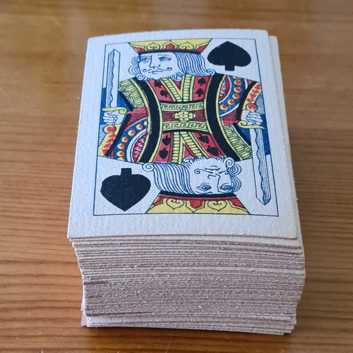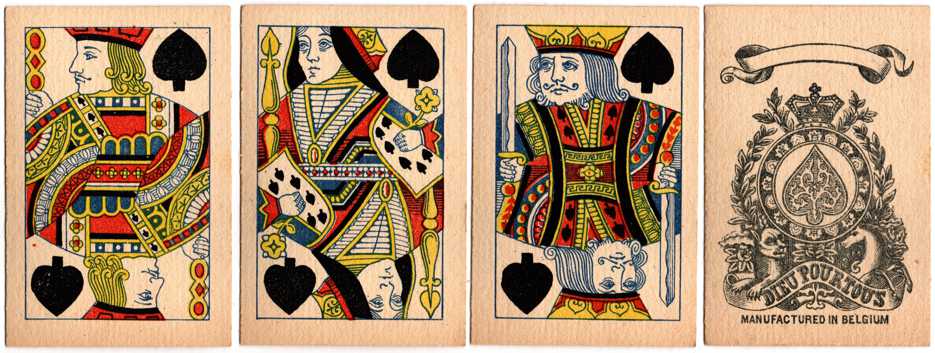The first thing to note is that they're printed on very heavy card stock. Free-standing, the pack is 38mm thick.

The second thing to note is that the pips on the picture cards are top-right and bottom-left.

This is the opposite to regular packs of cards, which are designed to be fanned by right-handed people. Packs from earlier than about 1860 will usually have some cards with their pips top-right rather than top-left (such cards are called "unturned"), but it's only a select few that are like that — not every picture card, as it is in this case.
The third thing to note is that the Ace of Spades says the pack is printed in Belgium, but there's no manufacturer's name in the scroll. This suggests that it was made so toy shops and the like could print their own names there.
As for who did manufacture it, well it was a company called Van Genechten. The company closed in 1909 and started making this particular pack in 1904, so its date of manufacture falls in a window of six years. The name of the pattern is Great Mogul number 166.
"Great Mogul" started out as a symbol of quality for playing cards in the mid-1700s, but there wasn't the trademark protection enjoyed by companies these days. Many manufacturers in the UK and later Belgium used the name, some for their premium-quality cards and some because they wanted to give the impression their cards were premium-quality. Eventually, the name lost its shine, to the extent that the United States Playing Card Company uses it for usable-but-not-perfect print runs of their Bee brand.
The drawer I keep my playing cards in is 40mm deep. I nearly had a problem there.